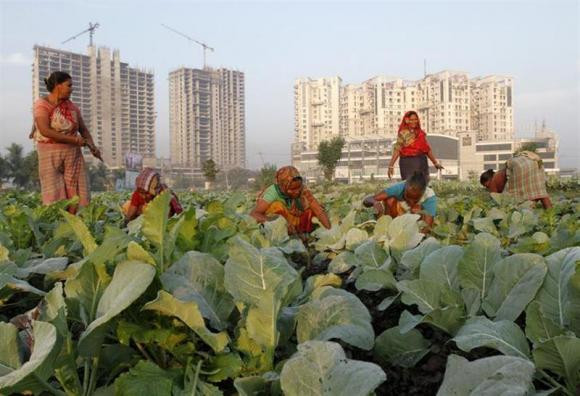Moody's Says India Growth Stable But Inflation and Infrastructure Figures Remain Weak

India's June quarter GDP growth data has underpinned the stable outlook on the country's rating but its fiscal, inflation and infrastructure metrics will remain weaker than similarly-rated peers, Moody's Investors Service said on Wednesday.
The Indian economy expanded 5.7% from a year earlier in the three months to June, beating market consensus and sharply above the previous quarter growth of 4.6%, data showed on 29 August.
"The (GDP) data is in keeping with our long-held view that growth deceleration to sub-5% levels over the last two years would reverse over time. This forecast has underpinned the stable outlook on India's rating amid currency volatility, declining investment and poor market sentiment," the Moody's statement said.
Higher growth is likely to increase tax revenues and capital inflows and will reverse some of the weakening in India's fiscal and external position.
"Nonetheless, we forecast India's fiscal, inflation and infrastructure metrics to remain weaker than the median for similarly rated peers," as per the statement authored by Atsi Sheth, a senior vice president at Moody's.
Manufacturing, Commitments
The deceleration in economic expansion since 2011 was largely due to a cooling in manufacturing output, which recovered in the June quarter, reviving GDP growth, the rating agency noted.
Moody's said manufacturing will lead the Indian economic recovery in the coming years, helping increase the tax revenues. But it added that higher tax revenues alone will not boost the country's rating profile.
A substantial reduction in long-term expenditure commitment is key for Asia's third largest economy, according to the rating agency.
"We expect manufacturing activity to accelerate over the next two years, supported by positive sentiment and a policy focus on investment," Moody's said.
"A decline in the deficit based on revenue buoyancy alone would be credit neutral at best, as the fiscal position would remain vulnerable to future cyclical downturns and external shocks."
"On the other hand, a significant reduction in long-term expenditure commitments, particularly those that are exposed to inflation, global or currency shocks, could lower this vulnerability," Moody's said.
The rating agency said it is unclear now whether the government will reduce such commitments.
"Public spending has played an important role in supporting growth when private demand has slowed, but this practice has kept the fiscal deficit much higher than those of similarly rated peers."
Monsoon, Portfolio Flow Impacts
Two major factors that may impact India's recovery in the near future are weak monsoon and vulnerability to portfolio flows, Moody's said, but added that it still expects the country to keep the growth rate above 5%.
"Lower agricultural output due to a weak monsoon and more modest government spending growth as authorities aim to meet budget targets will likely temper the pace of GDP acceleration in the coming months. But growth will still likely remain above 5% this year, and rise further in fiscal 2016," the rating agency said.
Moody's said portfolio flows will continue to accelerate, boosting foreign reserves, but it added that rising portfolio and debt flows also increase vulnerability to shocks.
"We also expect a recovery in growth to have a positive effect on India's balance of payments and foreign reserves, via renewed investor appetite and capital inflows."
"Rising reserves, in and of themselves, are unlikely to provide uplift to India's credit profile, as long as capital flows are skewed towards increasing portfolio investment and higher external bond and bank borrowing," Moody's added.
In such a scenario, India will remain vulnerable to domestic or global shocks that could lead to a cessation or reversal of these flows, the rating agency warned.
Quality Goods and FDI
According to Moody's Investors Service, what is good for India is achieving greater competitiveness for manufactured goods - both for export and domestic consumption in addition to higher foreign direct investments.
Getting there through lower inflation or infrastructure development would lower India's merchandise trade deficit, benefiting the sovereign credit profile, the rating agency said.
"So too would a more significant rise in foreign direct investment, which would offer efficiency gains and be unlikely to reverse as quickly as debt or portfolio flows."
© Copyright IBTimes 2025. All rights reserved.






















